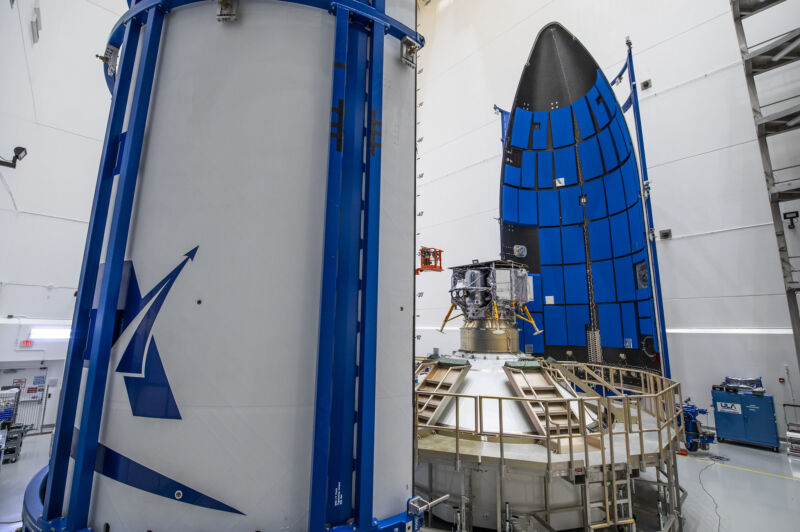[ad_1]

On Monday morning, the brand new Vulcan rocket made a smashing debut, launching from Cape Canaveral Area Pressure Station in Florida and performing flawlessly. After 50 minutes of flight, the rocket’s higher stage deployed its main payload—the Peregrine lunar lander—right into a Moon-bound trajectory. United Launch Alliance declared full success with its new rocket.
After the deployment of the spacecraft, its developer, Pittsburgh-based Astrobotic, additionally mentioned its floor controllers had efficiently established contact with Peregrine. All appeared properly because the spacecraft entered a extremely elliptical orbit that may deliver it towards the Moon within the coming weeks.
Nonetheless, in a while Monday morning, about six hours after liftoff, Astrobotic launched an up to date assertion. Whereas the automobile’s avionics methods, together with the first command and information dealing with unit and the thermal, propulsion, and energy controllers, had all powered on and carried out as anticipated, there was an issue.
“After profitable propulsion methods activation, Peregrine entered a protected operational state,” the corporate mentioned. “Sadly, an anomaly then occurred, which prevented Astrobotic from reaching a steady sun-pointing orientation. The workforce is responding in actual time because the scenario unfolds and might be offering updates as extra information is obtained and analyzed.”
Batteries are draining
Lower than an hour after its preliminary assertion on the anomaly, Astrobotic issued a second replace that sounded pretty ominous.
“We proceed to collect information and report our greatest evaluation of what we see,” the corporate mentioned. “The workforce believes that the doubtless reason for the unstable sun-pointing is a propulsion anomaly that, if confirmed true, threatens the flexibility of the spacecraft to mushy land on the Moon.”
Peregrine will want its primary engine to manage the spacecraft’s descent all the way down to the lunar floor. Based mostly on extra info supplied by the corporate, it seems that time is operating out to repair the issue.
“Because the workforce fights to troubleshoot the difficulty, the spacecraft battery is reaching operationally low ranges,” Astrobotic mentioned. “Simply earlier than getting into a recognized interval of communication outage, the workforce developed and executed an improvised maneuver to reorient the photo voltaic panels towards the Solar. Shortly after this maneuver, the spacecraft entered an anticipated interval of communication loss.”
In keeping with NASA’s Deep Area Community web site, Peregrine reestablished communication with the controllers on Earth by round 11:30 am ET. The communication then stopped once more about quarter-hour later.
Taking pictures on aim
If engineers can handle the pointing downside and get Peregrine powered again up, there’s time to work on the propulsion challenge. As a result of spacecraft’s circuitous path to the Moon, Peregrine just isn’t as a consequence of land there till February 23.
The spacecraft was privately constructed and largely funded by NASA by its Business Lunar Payload Companies Program. The US area company paid $108 million for the supply of a number of science experiments to the Moon, together with a radiation sensor, spectrometers, and a laser retroreflector array on board Peregrine. Astrobotic has additionally bought some payload area to non-public firms.
With this business program, NASA selected to obtain a lunar supply service reasonably than constructing a lander by itself. This price the company considerably much less however entailed extra danger. The company additionally has funded a lander constructed by one other firm, Intuitive Machines, that would launch subsequent month on a Falcon 9 rocket. About 10 extra business lunar payload missions are within the pipeline.
The previous chief of NASA’s scientific applications, Thomas Zurbuchen, has beforehand mentioned this revolutionary lunar program was designed with velocity in thoughts and that the company would tolerate some failures because it takes “pictures on aim” in making an attempt to land on the Moon. “We don’t anticipate each launch and touchdown to achieve success.”
This story has been up to date to replicate the issuance of a second assertion by Astrobotic.
[ad_2]